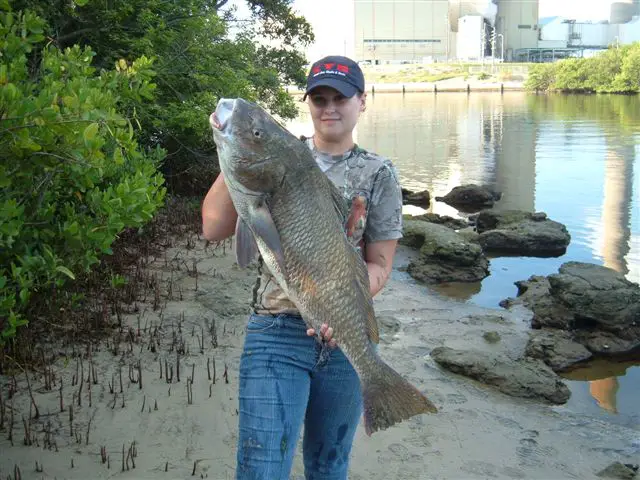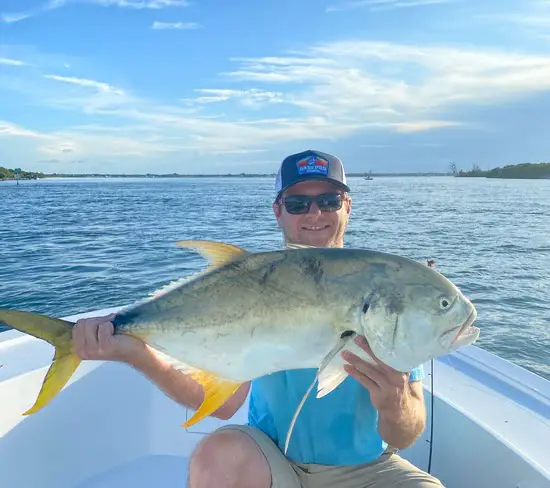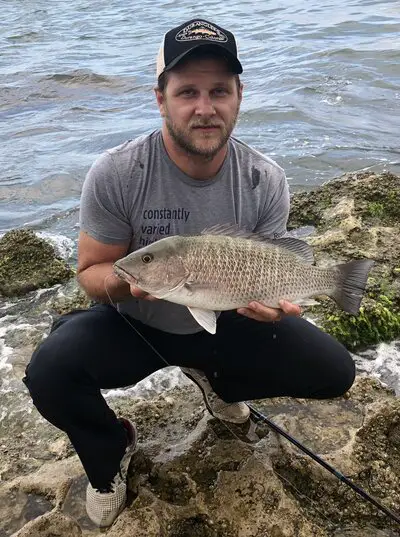Eating your own catch is one of the cornerstones of fishing, and when you net a trophy-sized fish your first instinct may be to cook up those monster fillets for you and your buddies.
But sometimes these giants have some seriously nasty meat!
So what gives? Why do bigger fish taste bad and more fishy than their small and medium-sized counterparts?
Let’s dive into the science of why bigger fish aren’t always better.
Parasitic Infestation
Parasites affect almost all fish in fresh and saltwater. These often come in the form of worms that burrow into a fish’s flesh, isopods that latch into their mouths, and a whole host of other weird and hideous forms. Talk about nightmare fuel!
While parasites don’t particularly care what size their host is, two factors contribute to larger fish having more of them.
For starters, the bigger a fish is, generally, the longer it’s been alive… and the more time it has had to collect parasites.
Secondarily, parasites need to find a fish before they can get inside of them. Larger fish have more surface area that the parasites can latch onto.

In the case of parasites that are ingested, larger fish also eat more, giving parasites more chances to get in there. Sounds delicious, doesn’t it?
I’ve noticed that this trend is particularly obvious with black drum caught and kept from Florida’s gulf coast.
Smaller and younger drum have some pretty tasty flesh, with it being firm and sweet like many other game fish.
But once you cross the eight pound barrier, black drum flesh starts to have a higher chance of being wormy.
Some skilled chefs are able to effortlessly cut out parasites without affecting the quality of the meat, but this can be harder to do for fish you catch yourself.
Plus, there are other things that make bigger fish taste worse that can’t simply be cut away.
Bioaccumulation
If you’ve read our article on eating sharks, then you may remember the process of bioaccumulation, which can make some sharks downright poisonous to consume!
As a quick refresher, all animals are exposed to pollutants in their environment, and if they ingest some it can be stored in their bodies.
When a larger animal eats a smaller one, it absorbs all of the toxins the smaller animal had already absorbed. And predators eat a lot of prey!
One can imagine how this cycle can continue up and up the food chain until the biggest fish end up accumulating plenty of chemicals in their meat.
In the case of sharks and other oceanic fish, these chemicals can include mercury, making the fish borderline dangerous to eat.
But even if health isn’t a concern, this concentration of chemicals in fish meat certainly affects taste.
Bioaccumulation can occur with naturally occurring minerals as well as man-made compounds, which often adds a muddy or metallic taste to the fish.
In freshwater environments, these chemicals have a much higher impact on bottom dwelling fish than on midwater predators, which is one of the reasons that bottomfeeders like stingray can get a bad rep.
All fish are still affected, though!
Eating smaller fish can help combat these off flavors, and can even be healthier for you depending on how clean the water you’re fishing from is.
Age-Related Changes
Even if a fish grows big and strong in the cleanest possible water, and avoids all parasites, its meat still undergoes changes simply by the process of aging.
These changes can affect meat quality and taste as much as any of the others, despite being caused by nothing but time!
Some species of fish, especially fast-moving predators such as jacks crevalle, build up more fibrous tissue as they grow.
Smaller fish have smaller fibers, and the opposite holds true for larger fish. This can make their flesh tougher and chewier.

Lots of game fish change their diets as they age as well, especially in the case of inshore saltwater fishing.
Younger fish generally hone in on crustaceans and small invertebrates, which can be easier for them to catch. Some chefs say this contributes to the sweet taste of young fish fillets.
But as they age, many of these same species start targeting small and medium-sized baitfish that they weren’t able to catch before. This can lead to a noticeable fishy taste developing in the meat.
As the saying goes, you are what you eat!
Related: What Is The Worst Tasting Fish? The Foulest Fillet?
How Big is Too Big? Optimal ‘Keeper’ Size
The perfectly-sized fish to keep varies from species to species, and even from region to region within the same species. That being said, there are some good general guidelines that you can follow to ensure the best possible chance of a delicious meal.
For starters, it’s generally a good rule to try to stick to as close to the legal minimum size as you can- within 3-4 inches if possible! Beyond that and the fish start to accumulate the telltale flavor and texture changes that we’ve discussed in this article.
Cold water is said to increase the size limit for tasty fish when compared to warmer areas, due in part to the lower prevalence of parasites at lower temperatures.

Smaller is still likely your best bet, but icy waters can give you larger fish without the usual decline in quality!
Of course, there are many factors that affect how fish taste as they grow…
Region, species, rainfall and climate conditions, and even specific local waterways can change how fish taste at different sizes. Be sure to ask locals for their recommendations when it gets down to the specifics!
Letting the Big Ones Go can Help the Planet, Too!
Leaving the biggest fish in the water can save more than just your taste buds. The practice can also help to keep the populations of your favorite fish stable and thriving!
Studies have shown that the larger a female fish is, the more eggs it can lay in a given mating cycle. It isn’t linear, either- a fish 15 times larger than its smaller brethren was shown to lay up to 28 times more eggs!
Larger fish dedicate less of their total energy to growth, and more to reproduction.
By leaving these “super breeders” alive, more baby fish are hatched each year, which means more mid-sized fish for you and all the other anglers to catch once they grow up! Which is all the better considering that they don’t taste that great anyways.
Some species in certain regions have a maximum legal size as well as a minimum for this exact reason! The laws are in place to help make sure we can catch all the fish we’d like for years and years to come.
Conclusion
The next time you land an absolute behemoth of a catch, it’s probably best to let it swim to fight another day and take home the smaller (but still legal) fish you caught alongside it.
Not only will you be in for a better experience at the dinner table, you’re also helping to ensure a better fishing experience for everyone in the future as well.
Thanks for reading!
You May Also Like: What Is The Best Tasting Fish? FULL Species List Ranked!

Growing up in Florida, I’ve been surrounded by saltwater my entire life…and I love sharing my passion with others.
To learn more about why I started Saltwater Mecca, visit the ABOUT page.
Thank you for reading this article. Browse around & have some fun!